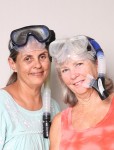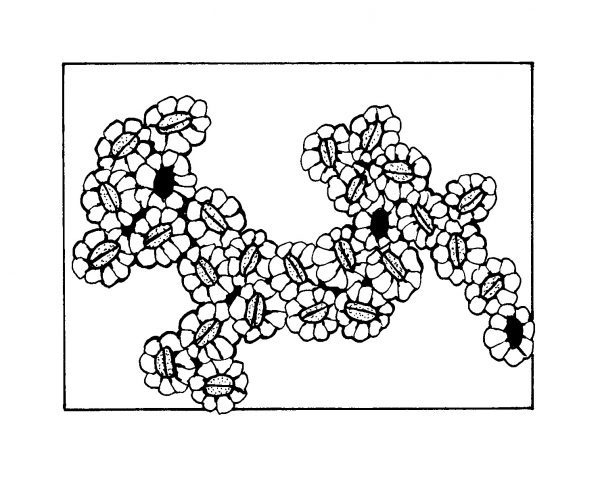Be Aware of the Buckshot Barnacle

The splash zone is the highest part of the intertidal area and extends from the average height of high tides to the highest point that is reached by ocean mist and water spray. This area remains out of the water most of time and is considered the harshest environment for the creatures that live in it. It is pounded by only the highest of waves, has prolonged sun and heat exposure and the lack of water causes reduced feeding opportunities most of the time. A species that is well adapted to the splash zone is the buckshot barnacle (Chthamalus dalli). One of the smallest barnacle species, they can appear as if they are mineral deposits on rocks and often go unrecognized by tidepool visitors walking on them. Having a range from Alaska to San Diego, buckshot barnacles live in dense clusters of up to 60,000 individuals per square yard.
Buckshot barnacles are sessile (stationary) animals and part of the crustacean family of anthropods related to shrimp, crab and lobster. They are conically shaped and can reach up to a ¼ inch in diameter and up to 1/8 inch in height and their heavy outer shell is colored white to gray to light brown and encloses the body. At the top of the shell is an oval shaped opening that contains four plates that form a cross shape when closed. When submerged in water, the plates open and feathery legs (cirri) extend out of the shell to sweep through the water to absorb oxygen and to trap plankton and detritus for food. When out of the water, the plates tightly close to prevent desiccation and can stay closed for days to weeks, if needed. Predators of adult buckshot barnacles include certain species of seastars and some species of predatory marine snails including dogwinkles and thorn snails. In the larval stage, they are eaten by small fish and suspension feeders.

Living up to three years, buckshot barnacles are hermaphrodites that have both male and female sex organs. Releasing several broods of offspring during each breeding season, reproduction is carried on in three ways. Most commonly, internal fertilization takes place when males extend the penis into a nearby female cavity of another barnacle. In fact, the penis of the male is considered one of the longest in relation to body size of all animals on earth! Secondly, they have been shown to be able to self fertilize. Finally, recent evidence suggests that the buckshot barnacle can also reproduce by spermcast mating which is when sperm is released into the water currents and then “captured” by the female who uses the sperm to fertilize her eggs. Initially brooded inside the mother, thousands of larvae are released swimming freely in the ocean before permanently cementing their head to the rocks where they remain all their lives. Next time you visit the tidepools, take a magnifying glass to appreciate these remarkably tough animals.
Local residents Mia Davidson and artist Jan Sattler are year round ocean swimmers who believe a better-educated public will contribute to preservation of the marine habitat and its organisms.




